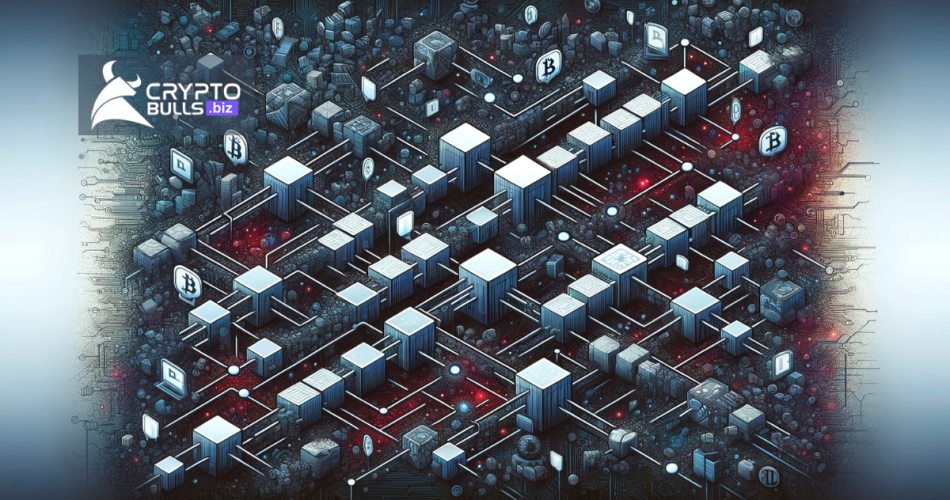Blockchain Network Congestion: A Roadblock to Seamless Transactions
Did you know that there was a period during which the typical cost of processing a transaction on the Ethereum network surged to approximately $50? Curious about the reason? The most straightforward explanation is network congestion on the blockchain.
Blockchain technology has risen in popularity due to its potential for revolutionizing sectors, but it has come with challenges. Congestion is one of the most significant concerns facing blockchain networks. In this blog, we will look at blockchain network congestion, what causes it, how it affects transactions, real-world case studies, and potential remedies.
When many transactions are submitted to a blockchain in a short period, the blockchain network might become congested. Congestion causes transaction confirmations to be delayed and might result in increased costs for customers who want their transactions prioritized. The blockchain network is overburdened, like a choked motorway during rush hour, resulting in transaction slowdowns and inefficiencies.Did you know that there was a period during which the typical cost of processing a transaction on the Ethereum network surged to approximately $50? Curious about the reason? The most straightforward explanation is network congestion on the blockchain.
Blockchain Network Congestion: Factors
High Transaction Volume
Consider a blockchain a busy store, with transactions acting as customers. When too many clients (transactions) try to enter the store simultaneously, it might get congested, and people must wait. Similarly, a significant increase in the number of transactions on a blockchain might cause it to become crowded, resulting in congestion.
Small Block Size
Transactions on a blockchain are organized into blocks. However, just as you can only fit so many objects in a box, each block has a limit on how many transactions it can carry. Congestion occurs when more transactions are waiting to enter the block than the block can process.
Network bottlenecks
Generally, the blockchain’s Network can be like a road with slow traffic. Sluggish nodes and restricted network bandwidth can slow down transactions. Consider automobiles on a road going slowly owing to traffic.
DDoS Attacks
A Distributed Denial of Service (DDoS) attack is similar to a sudden flood of automobiles attempting to enter a road simultaneously. If the blockchain network is subjected to a DDoS assault, the huge number of incoming transactions may overwhelm it, resulting in congestion.
Impact on Cost and Speed of Transactions
Longer Confirmation Times
Consider blockchain transactions to be communications passed from one person to another. When a blockchain becomes congested, it is similar to the postal service being overburdened with excessive letters to deliver. As a result, your communication (transaction) will take longer to reach its destination and be verified. Transactions can take much longer to complete during congestion, and you may have to wait for hours or even days to validate your transaction.
Higher Transaction Fees
In a crowded marketplace, merchants sometimes favor clients ready to pay extra to buy their things first. Similarly, blockchain miners favor transactions with higher fees when there is network congestion. If you want your transaction to be processed quickly, you’ll have to pay an extra price to get it included in the following block. Congestion can raise transaction costs since you may need to pay an extra fee to guarantee your transaction will not be delayed.
Blockchain Network Congestion: Case Studies
Bitcoin’s Famous congestion(2017)
Many blockchains have been plagued by scalability issues. The network’s speed of transactions is limited by constraints such as block size and block creation time. This has created network congestion, such as when Bitcoin Ordinals were introduced.
Bitcoin, the first and most popular cryptocurrency by market capitalization, dramatically rose in transaction demand in December 2017. This unusual surge in activity was caused mostly by the chaos around cryptocurrency trading at the height of the Bitcoin bull run. However, the increased volume of transactions met with a fundamental restriction of the Bitcoin network, notably its 1MB block size.
The Network could only execute a limited amount of transactions within each block due to the 1MB block size constraint, resulting in a significant backlog of unconfirmed transactions. As a result, transaction costs began to rise dramatically. Users were forced to pay high fees to complete their purchases.Willy Woo, a cryptocurrency expert, produced a graph comparing BTC transactions fees during two consecutive congestion episodes.In 2017, when Bitcoin congestion reached 85 percent and transaction fees reached as high as $25 per transaction. The other instance was in October 2018 , despite the all-time high congestion rate, the average Bitcoin transaction price was close to $0.10 per transaction.

Source: Willy Woo Twitter Profile
A blockchain’s network latency and bandwidth also influence how many transactions it can process.Transaction validation is slowed due to delays in propagating transactions among nodes and restricted network bandwidth. Congestion increases when more transactions compete for the limited resources.
The increased demand exceeded Bitcoin’s network capability. Over 200,000 transactions were left unconfirmed and awaiting processing at this moment of high congestion. The Network’s efficiency and accessibility have suffered due to these transaction backlogs. Confirmation times have significantly increased, with some transactions requiring days to complete. This resulted in a poor user experience and a considerable delay in transaction completion.Recently, the introduction of BRC-20 coins also increased transaction fees and strained the network.
Bitcoin network congestion impacted the cryptocurrency’s value, causing it to decline by more than 9% in a single day. Due to hefty transaction fees and a backlog of transactions, over 55,000 traders were liquidated.
Ethereum’s Congestion Gas Fees

Congestion in Ethereum During the DeFi Boom
Ethereum, the major blockchain platform, had congestion concerns during the last bull run. This congestion arose due to the overwhelming demand for DeFi (Decentralized Finance) applications, especially those involving liquidity mining and yield farming, with platforms like Uniswap leading the way. Users can use these DeFi protocols to lend, borrow, and exchange digital assets in a decentralized way. The excitement around DeFi resulted in increased activity, overcrowding Ethereum’s Network.
As more users rushed to DeFi protocols to take advantage of these opportunities, the Ethereum network saw a significant rise in transaction demands. This increasing transaction demand strains the Network’s capacity, resulting in delays and raising transaction costs, known as ‘gas’ fees in Ethereum. DeFi customers were often ready to pay higher gas rates to complete their transactions quickly, creating a competitive and expensive market.
Congestion on Ethereum Caused by CryptoKitties
In The same year, Ethereum had congestion concerns caused by certain factors. CryptoKitties were a pleasant, although unexpected, phenomenon. This Ethereum-based digital collectible game allows users to gather, breed, and trade unique virtual cats. What began as an entertaining concept grew popular, drawing many users who wanted to buy and sell CryptoKitties.
The sudden increase in CryptoKitties users resulted in a tremendous inflow of transactions on the Ethereum network. Because of the increased transaction demand, there was a backlog of pending transactions, and gas prices skyrocketed. Like the DeFi boom, congestion highlighted the Network’s vulnerability to applications with huge transaction volumes. It became clear that Ethereum’s scalability faced difficulties when dealing with unexpected and serious activity peaks.
The Ethereum blockchain saw congestion in both situations because of unexpected increases in user activity. These occurrences highlighted the need for scalability in blockchain networks and appropriate solutions to handle increasing transaction volumes while preserving network efficiency and user experience.
Solutions to Blockchain Network Congestion
Layer-2 Protocols
Layer2 protocols are like shortcuts that help speed up transaction processing on a blockchain. Consider the main blockchain a large highway on which automobiles (transactions) travel. The roadway can get crowded at times, creating delays. Layer 2 protocols are similar to minor highways that connect to the main highway. They allow transactions to take these quicker and less congested secondary routes. The most likable thing is that these secondary roads remain connected to the main route and benefit from its security. Layer2 solutions, like the Lightning Network, take advantage of these back roads to execute transactions more rapidly and at a lesser cost.
Increasing Block Size
Increasing the block size in blockchain networks is crucial for increasing their transaction capacity. This strategy, which blockchains like Bitcoin Cash have used, involves increasing the data-carrying capacity of each block, which is identical to extending a road to accommodate more automobiles during a busy rush hour.
As a result, a bigger block may include more transactions, allowing the Network to handle a greater volume of data simultaneously. This leads to speedier transaction confirmations and potentially cheaper costs. However, this technique is controversial because it might impact network decentralization and requires careful attention to balance scalability and overall network security and efficiency. Blockchain communities are always weighing the benefits and drawbacks.
Segregated Witness (SegWit)
The Bitcoin network’s Segregated Witness (SegWit) protocol update is critical. It improves capacity and security by changing how transaction data is stored within blocks. SegWit does this by segregating or separating transaction signatures from transaction data, substantially decreasing transaction size. As a result, block space is utilized more efficiently, allowing more transactions to fit within a single block. SegWit increases scalability and network security by lowering the chance of specific vulnerabilities, making Bitcoin more robust and responsive to changing user demands.
Conclusion
In any case, blockchain network congestion results in greater transaction fees and unexpected delays. This impacts user experience and makes ordinary blockchain usage more difficult. It is an increasing concern, but the blockchain community is constantly working on solutions to make everyday transactions quicker and more cost-effective. As consensus mechanisms evolve, we expect to see more efficient and scalable solutions develop to offer a smoother user experience. With further development and acceptance, blockchain technology may overcome the barrier of congestion and realize its full potential in various sectors.


